- europages
- >
- COMPANIES - SUPPLIERS - SERVICE PROVIDERS
- >
- table salt
Results for
Table salt - Import export
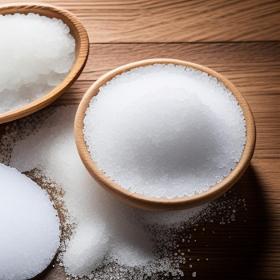
TRADEGE FOREIGN TRADE AND CONSULTING
Turkey
We are supplying natural raw salt, de-icing road salt, industrial salt, food salt, water treatment and softening salt, fine coarse salt, grinding table salt in package, nitrite salt, washed salt, double washed salt.
Request for a quote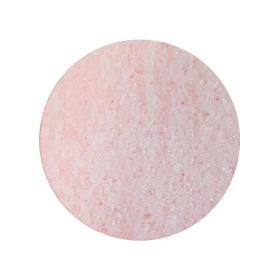
VEHGRO B.V
Germany
"Origin hymalaya crystal salt This crystal salt originates from the salt range in Pakistan. The salt range belongs geologically, but not geographically, to the Himalayan massif. Himalayan crystal salt is a natural table salt that is about 250 million years old. Salt without chemical additives and fluxes that is extracted as it has been done for hundreds of years. Himalayan Crystal Salt formed more than 250 million years ago during the disappearance of the original ocean. It is harvested by hand on the Tibetan high plains. Salt from the Himalayas used to be called ""salt of the king"" because the very high quality salt was sold only to the local nobility. The pink colour comes from the minerals that the salt has absorbed such as sodium chloride, magnesium and calcium. This Himalayan salt is fine crystal salt that is unrefined and still has all the good properties that salt possesses. Most of the salts available in the market have been processed, which has washed o…"
Request for a quote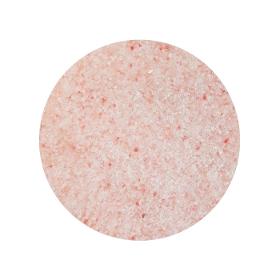
VEHGRO B.V
Germany
"Original Himalayan crystal salt This crystal salt originates from the salt range in Pakistan. The salt range belongs geologically, but not geographically, to the Himalayan massif. Himalayan crystal salt is a natural table salt that is about 250 million years old. Salt without chemical additives and fluxes that is extracted as it has been done for hundreds of years.Himalayan Crystal Salt formed more than 250 million years ago during the disappearance of the original ocean. It is harvested by hand on the Tibetan high plains. Salt from the Himalayas used to be called ""salt of the king"" because the very high quality salt was sold only to the local nobility. The pink colour comes from the minerals that the salt has absorbed such as sodium chloride, magnesium and calcium. This Himalayan salt is fine crystal salt that is unrefined and still has all the good properties that salt possesses. Most of the salts available in the market have been processed, which has was…"
Request for a quote
VEHGRO B.V
Germany
"Origin hymalaya crystal salt This crystal salt originates from the salt range in Pakistan. The salt range belongs geologically, but not geographically, to the Himalayan massif. Himalayan crystal salt is a natural table salt that is about 250 million years old. Salt without chemical additives and fluxes that is extracted as it has been done for hundreds of years. Himalayan Crystal Salt formed more than 250 million years ago during the disappearance of the original ocean. It is harvested by hand on the Tibetan high plains. Salt from the Himalayas used to be called ""salt of the king"" because the very high quality salt was sold only to the local nobility. The pink colour comes from the minerals that the salt has absorbed such as sodium chloride, magnesium and calcium. This Himalayan salt is fine crystal salt that is unrefined and still has all the good properties that salt possesses. Most of the salts available in the market have been processed, which has washed o…"
Request for a quote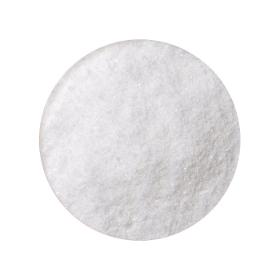
VEHGRO B.V
Germany
"Origin and extraction This pure natural table salt is produced on the coasts of the Mediterranean Sea. The saltworks are located in large natural parks or nature reserves, away from industry and large cities. The sea water is channelled through centuries-old canals to the salt marshes. The wind and sun gradually increase the salt concentration. The salt begins to crystallise and sinks to the bottom of the saltworks and is then harvested with special tools. After extraction, the salt is dried and sieved into different grain sizes. The Mediterranean sea salt is a purely natural product, free from chemicals and additives. Today, salt production still takes place according to ancient traditions in Mediterranean salt marshes. The extraction areas are refuges for animals and form an important habitat for many endangered bird and plant species. Here, the commercialisation of sea salt extraction contributes to the preservation of a unique coastal landscape. Tas…"
Request for a quote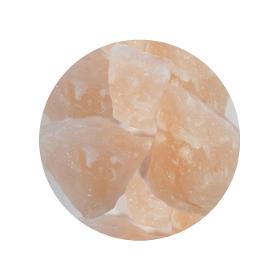
VEHGRO B.V
Germany
"Original Himalayan crystal salt This crystal salt originates from the salt range in Pakistan. The salt range belongs geologically, but not geographically, to the Himalayan massif. Himalayan crystal salt is a natural table salt that is about 250 million years old. Salt without chemical additives and fluxes that is extracted as it has been done for hundreds of years.Himalayan Crystal Salt formed more than 250 million years ago during the disappearance of the original ocean. It is harvested by hand on the Tibetan high plains. Salt from the Himalayas used to be called ""salt of the king"" because the very high quality salt was sold only to the local nobility. The pink colour comes from the minerals that the salt has absorbed such as sodium chloride, magnesium and calcium. This Himalayan salt is fine crystal salt that is unrefined and still has all the good properties that salt possesses. Most of the salts available in the market have been processed, which has washed…"
Request for a quote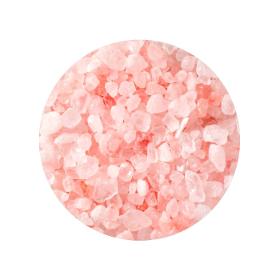
VEHGRO B.V
Germany
"Original Himalayan Crystal Salt This crystal salt originates from the salt range in Pakistan. The salt range belongs geologically, but not geographically, to the Himalayan massif. Himalayan crystal salt is a natural table salt that is about 250 million years old. Salt without chemical additives and fluxes that is extracted as it has been done for hundreds of years.Himalayan Crystal Salt formed more than 250 million years ago during the disappearance of the original ocean. It is harvested by hand on the Tibetan high plains. Salt from the Himalayas used to be called ""salt of the king"" because the very high quality salt was sold only to the local nobility. The pink colour comes from the minerals that the salt has absorbed such as sodium chloride, magnesium and calcium. This Himalayan salt is fine crystal salt that is unrefined and still has all the good properties that salt possesses. Most of the salts available in the market have been processed, which has washed…"
Request for a quote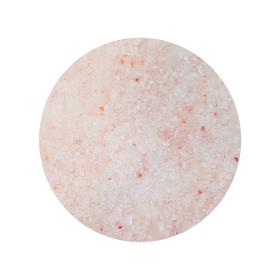
VEHGRO B.V
Germany
"Original Himalayan Crystal Salt This crystal salt originates from the salt range in Pakistan. The salt range belongs geologically, but not geographically, to the Himalayan massif. Himalayan crystal salt is a natural table salt that is about 250 million years old. Salt without chemical additives and fluxes that is extracted as it has been done for hundreds of years.Himalayan Crystal Salt formed more than 250 million years ago during the disappearance of the original ocean. It is harvested by hand on the Tibetan high plains. Salt from the Himalayas used to be called ""salt of the king"" because the very high quality salt was sold only to the local nobility. The pink colour comes from the minerals that the salt has absorbed such as sodium chloride, magnesium and calcium. This Himalayan salt is fine crystal salt that is unrefined and still has all the good properties that salt possesses. Most of the salts available in the market have been processed, which has washed…"
Request for a quote
VEHGRO B.V
Germany
"Original Himalayan Crystal Salt This crystal salt originates from the salt range in Pakistan. The salt range belongs geologically, but not geographically, to the Himalayan massif. Himalayan crystal salt is a natural table salt that is about 250 million years old. Salt without chemical additives and fluxes that is extracted as it has been done for hundreds of years.Himalayan Crystal Salt formed more than 250 million years ago during the disappearance of the original ocean. It is harvested by hand on the Tibetan high plains. Salt from the Himalayas used to be called ""salt of the king"" because the very high quality salt was sold only to the local nobility. The pink colour comes from the minerals that the salt has absorbed such as sodium chloride, magnesium and calcium. This Himalayan salt is fine crystal salt that is unrefined and still has all the good properties that salt possesses. Most of the salts available in the market have been processed, which has washed…"
Request for a quote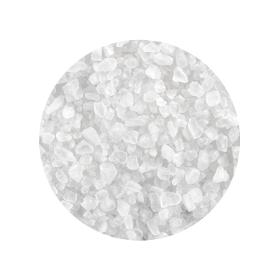
VEHGRO B.V
Germany
"Origin and extraction This pure natural table salt is produced on the coasts of the Mediterranean Sea. The saltworks are located in large natural parks or nature reserves, away from industry and large cities. The sea water is channelled through centuries-old canals to the salt marshes. The wind and sun gradually increase the salt concentration. The salt begins to crystallise and sinks to the bottom of the saltworks and is then harvested with special tools. After extraction, the salt is dried and sieved into different grain sizes. The Mediterranean sea salt is a purely natural product, free from chemicals and additives. Today, salt production still takes place according to ancient traditions in Mediterranean salt marshes. The extraction areas are refuges for animals and form an important habitat for many endangered bird and plant species. Here, the commercialisation of sea salt extraction contributes to the preservation of a unique coastal landscape. Tas…"
Request for a quote
VEHGRO B.V
Germany
"Origin and extraction This pure natural table salt is produced on the coasts of the Mediterranean Sea. The saltworks are located in large natural parks or nature reserves, away from industry and large cities. The sea water is channelled through centuries-old canals to the salt marshes. The wind and sun gradually increase the salt concentration. The salt begins to crystallise and sinks to the bottom of the saltworks and is then harvested with special tools. After extraction, the salt is dried and sieved into different grain sizes. The Mediterranean sea salt is a purely natural product, free from chemicals and additives. Today, salt production still takes place according to ancient traditions in Mediterranean salt marshes. The extraction areas are refuges for animals and form an important habitat for many endangered bird and plant species. Here, the commercialisation of sea salt extraction contributes to the preservation of a unique coastal landscape. Tas…"
Request for a quote
VEHGRO B.V
Germany
"History The Dead Sea is the deepest lake in the world. It lies between Israel and Jordan and is bounded by the Jordan Valley to the north and the Wadi Araba to the south. The lake lies in a valley 429 metres below sea level, making the Dead Sea coast the lowest land area on earth. With an average daily temperature of 40 degrees, there is virtually no precipitation, and the air is clear and free of smog and pollutants. The Dead Sea is called dead because of its high salt content, which prevents aquatic organisms from living. This high salt content makes bathing in the Dead Sea a beneficial activity for people with skin problems. The salty water has a therapeutic effect on the skin, hair and nails. The Dead Sea continues to sink every year, there is less and less water in the Dead Sea. Large areas remain that are virtually nothing but salt. This salt is virtually cut out and then traded as bath salt. How is table salt obtained? In its pure form, Dead Sea…"
Request for a quote
VEHGRO B.V
Germany
"History The Dead Sea is the deepest lake in the world. It lies between Israel and Jordan and is bounded by the Jordan Valley to the north and the Wadi Araba to the south. The lake lies in a valley 429 metres below sea level, making the Dead Sea coast the lowest land area on earth. With an average daily temperature of 40 degrees, there is virtually no precipitation, and the air is clear and free of smog and pollutants. The Dead Sea is called dead because of its high salt content, which prevents aquatic organisms from living. This high salt content makes bathing in the Dead Sea a beneficial activity for people with skin problems. The salty water has a therapeutic effect on the skin, hair and nails. The Dead Sea continues to sink every year, there is less and less water in the Dead Sea. Large areas remain that are virtually nothing but salt. This salt is virtually cut out and then traded as bath salt. How is table salt obtained? In its pure form, Dead Sea…"
Request for a quote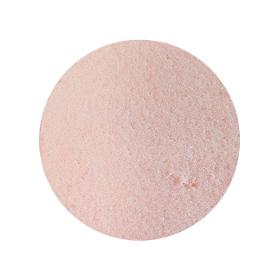
VEHGRO B.V
Germany
"Origin hymalaya crystal salt This crystal salt originates from the salt range in Pakistan. The salt range belongs geologically, but not geographically, to the Himalayan massif. Himalayan crystal salt is a natural table salt that is about 250 million years old. Salt without chemical additives and fluxes that is extracted as it has been done for hundreds of years.Himalayan Crystal Salt formed more than 250 million years ago during the disappearance of the original ocean. It is harvested by hand on the Tibetan high plains. Salt from the Himalayas used to be called ""salt of the king"" because the very high quality salt was sold only to the local nobility. The pink colour comes from the minerals that the salt has absorbed such as sodium chloride, magnesium and calcium. This Himalayan salt is fine crystal salt that is unrefined and still has all the good properties that salt possesses. Most of the salts available in the market have been processed, which has washed ou…"
Request for a quote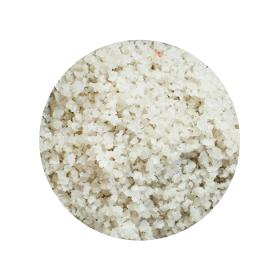
VEHGRO B.V
Germany
"Origin Celtic sea salt is also called ""Sel de Guarande"" and comes from France. The famous Guerande sea salt has been harvested for over 2000 years according to ancient tradition by salt farmers of Brittany, France. This salt is a low-sodium salt. The salt fields consist of grey-blue clay. This clay gives important minerals and trace elements to the salt crystal and this gives the Atlantic sea salt its unique gray colour and unmistakable flavor. Taste and use The Celtic sea salt with its strong salty taste is suitable for many dishes. Due to its high residual moisture, it is not suitable for use in a salt mill. It is an excellent replacement for ordinary table salt."
Request for a quote
VEHGRO B.V
Germany
"Origin Celtic sea salt is also called ""Sel de Guarande"" and comes from France. The famous Guerande sea salt has been harvested for over 2000 years according to ancient tradition by salt farmers of Brittany, France. This salt is a low-sodium salt. The salt fields consist of grey-blue clay. This clay gives important minerals and trace elements to the salt crystal and this gives the Atlantic sea salt its unique gray colour and unmistakable flavor. Taste and use The Celtic sea salt with its strong salty taste is suitable for many dishes. Due to its high residual moisture, it is not suitable for use in a salt mill. It is an excellent replacement for ordinary table salt."
Request for a quote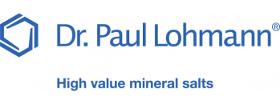
DR. PAUL LOHMANN GMBH & CO. KGAA
Germany
Dr. Paul Lohmann® offers LomaSalt 2.0 Basis as crystalline powder in food grade. Compared to conventional table salt, LomaSalt® contains 50 % less sodium and is therefore used to reduce the sodium content in nutrition.
Request for a quoteDo you sell or make similar products?
Sign up to europages and have your products listed
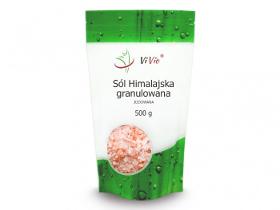
RADZIOWI SP. Z O.O.
Poland
Himalayan salt is the cleanest and healthiest salt on Earth. It comes only from one place - the Eastern Himalayan band in Pakistan. It has a color from white to light pink and dark red. It was created millions of years ago as a result of the oceans drying, and its deposits are located at a depth of 400-600 meters below the surface of the earth. The Himalayanian is cleaner and healthier than traditional table salt used by us every day. Contains a macro and microelements set. Himajalska Vivio is available in two versions: small and granulated. Himalayan salt is used more often than granulated in the kitchen, for seasoning dishes. Granulated salt has the same use, but also works in bathing. In this case, add about 10 g of salt per 1 liter of water to the bath. After a salt bath, half an hour of rest is recommended. The tests prove that we consume too much salt. It is present in most products that we reach for during the day: in cannings, sausages, sausages, marinades, powdered soups and r
Request for a quote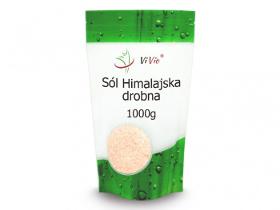
RADZIOWI SP. Z O.O.
Poland
Himalayan salt is the cleanest and healthiest salt on Earth. It comes only from one place - the Eastern Himalayan band in Pakistan. It has a color from white to light pink and dark red. It was created millions of years ago as a result of the oceans drying, and its deposits are located at a depth of 400-600 meters below the surface of the earth. The Himalayanian is cleaner and healthier than traditional table salt used by us every day. Contains a macro and microelements set. Himajalska Vivio is available in two versions: small and granulated. Himalayan salt is used more often than granulated in the kitchen, for seasoning dishes. Granulated salt has the same use, but also works in bathing. In this case, add about 10 g of salt per 1 liter of water to the bath. After a salt bath, half an hour of rest is recommended. The tests prove that we consume too much salt. It is present in most products that we reach for during the day: in cannings, sausages, sausages, marinades, powdered soups and r
Request for a quote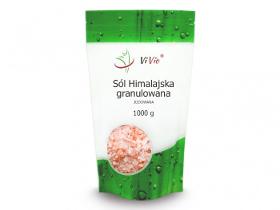
RADZIOWI SP. Z O.O.
Poland
Himalayan salt is the cleanest and healthiest salt on Earth. It comes only from one place - the Eastern Himalayan band in Pakistan. It has a color from white to light pink and dark red. It was created millions of years ago as a result of the oceans drying, and its deposits are located at a depth of 400-600 meters below the surface of the earth. The Himalayanian is cleaner and healthier than traditional table salt used by us every day. Contains a macro and microelements set. Himajalska Vivio is available in two versions: small and granulated. Himalayan salt is used more often than granulated in the kitchen, for seasoning dishes. Granulated salt has the same use, but also works in bathing. In this case, add about 10 g of salt per 1 liter of water to the bath. After a salt bath, half an hour of rest is recommended. The tests prove that we consume too much salt. It is present in most products that we reach for during the day: in cannings, sausages, sausages, marinades, powdered soups and r
Request for a quote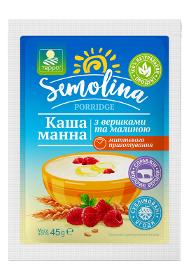
TERRA LLC
Ukraine
Semolina (66.0%), sugar (18.0%), whole milk powder (12.0%), dry cream (2.0%), freeze-dried raspberry pieces (1.24%), table salt, natural flavoring "raspberry".
Request for a quote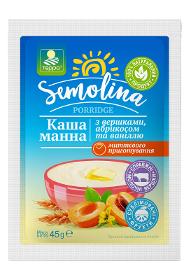
TERRA LLC
Ukraine
Semolina (66.0%), sugar (18.0%), whole milk powder (12.0%), dry cream (2.0%), freeze-dried apricot pieces (1.22%), table salt, natural flavoring "vanilla" (0.11%). Without synthetic preservatives and dyes. The product contains lactose, gluten. Energy value: 100 g of the product contains: 1628.8 kJ (389.3 kcal) Fats - 4.9 g, of which saturated fatty acids - 3.0 g Carbohydrates - 75.6 g, of which sugars - 23.7 g Proteins - 10.7 g Salt - 0.66 g
Request for a quote
FOODCOM S.A.
Poland
Sodium Chloride is an inorganic compound, also known as table salt, brewed salt, and road salt. It is obtained by thermal thickening of salted water. Sodium Chloride also occurs naturally as a mineral component and forms rock salt deposits called halite. It has the form of a fine crystalline white powder and a distinctive salty taste. Sodium Chloride is hygroscopic. The Sodium Chloride supplied by Foodcom S.A. is not genetically modified and can be obtained without anti-caking agents. Proper storage of Sodium Chloride in clean, dry, airtight containers ensures that it will not deteriorate. Foodcom S.A. offers Sodium Chloride in 25 kg, 50 kg bags or in Big Bags. Sodium Chloride is widely used as a food additive to give food a salty taste and as a food preservative. It is also important in the glass and tanning industries. Pure Sodium Chloride is used to treat electrolyte imbalances and can be found in eye wash, throat and nasal rinses.
Request for a quote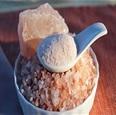
JADAM
Portugal
Sodium chloride commonly known as table salt, is an ionic compound with the chemical formula NaCl It forms as isometric crystals and is typically colorless or white, but may also be other colors depending on the amount and type of impurities contained within it The salt occurs in beds of sedimentary evaporate minerals. This is caused by large lakes and seas drying up. The salt beds can be hundreds of meters deep Industries: Household chemicals , Pharmaceutical industry , Food industry, Feed industry Agriculture, Paper industry, Water softening, Soda ash industry properties: CAS number: 7647-14-5 WE number: 231-598-3 Chemical formula: NaCl Molar mass: 58,44 g/mol Customs tariff code: 25010099 Names: Rock Salt Sodium Chloride Halite Form: White or Colorless crystals pH: 8-9 Melting / freezing point: 801°C Solubility in water: 358 g/l @20°C
Request for a quote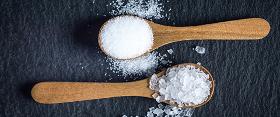
COLORICIO.SRL
Romania
Coloricio offers a wide range of food salts for preparing or preserving food: sea salt for retail and sea salt for the food industry, powder food salt, and vacuum salt. Food salt was precious and highly prized: due to its indispensable effects on health, due to its taste and preservative effect. Taste is indispensable today, as it was before. Many foods simply do not taste good without salt. Even today, salt is an indispensable part of food production, for taste, preservation, and other technological reasons. Table salt also proves to be an excellent carrier for iodine and fluoride, which we should take to avoid deficiency.
Request for a quote
KURGAN MEAT PROCESSING PLANT STANDART (SATURN LLC)
Russia
Ingredients: goose liver, beef fat, margarine (refined deodorized vegetable oils in natural and hardened state, drinking water, table salt, emulsifiers E471, E475), drinking water, onion, rice flour, table salt, nitrite salt (table salt, colouring fixative E250), sugar, emulsifiers: E471, E450, thickener E412, dextrose, taste and aroma intensifier E621, extracts of: nutmeg, black pepper, cloves. Mass fraction of meat ingredients (at the moment of packaging) is not less than 33% . Nutrition value per 100 g of the product (average values): protein - 4,0 g, fat - 16,0 g, carbohydrates - 5,0 g. Energy value / calories per 100 g of the product (average values): 754,0 kJ / 180,0 kcal. Opened tin should be stored in the fridge at the temperature from +2°C till +6°C for not more than 24 hours. It is recommended to cool down before use.
Request for a quote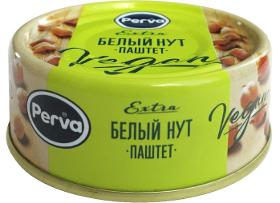
KURGAN MEAT PROCESSING PLANT STANDART (SATURN LLC)
Russia
Ingredients: boiled chick-pea, drinking water, refined deodorized sunflower oil, carrot, soy protein isolate, table salt, garlic, ground dried tomatoes, stabilizers E407, E415, yeast extract, spices and spice extracts (curcuma, cumin, black pepper, red pepper), taste and aroma intensifier E621. Nutrition value per 100 g of the product (average values): protein - 7,3 g; fat - 14,3 g; carbohydrates - 12,8 g. Energy value / calories per 100 g of the product (average values): 877,5 kJ /209,6 kcal. To be stored at the temperature from 0°C till +20°C and relative humidity not more than 75%. Opened canned food should be stored in the fridge at the temperature from +2°C till +6°C for not more than 48 hours. The product is ready for use. Shelf life is 2 years from the production date. The production date is given on the cover.
Request for a quote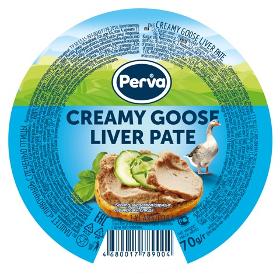
KURGAN MEAT PROCESSING PLANT STANDART (SATURN LLC)
Russia
Contents: water, butter (pasteurized cream from cow’s milk), goose liver, wheat flour, soy protein, table salt, emulgator e472c, onion, dextrose, dry lemon pulp, tumeric, ginger, white pepper, coriander, cardamom, mustard powder, vanillin extract, sugar, flavor intensifier E621, coloring agent – red rice. Nutrition value per 100 g of product (average value): protein – 5,0 g; fat – 25,0 g; carbs – 4,0 g. Food energy value / Caloric value per 100 g of product (average value): 1092,8 kJ/ 261,0 kkal. Weight percentage of meat ingredients is no less than 51,0 % (on filling). Storage life: 2 years from the production date. Production date can be found on bottom. Store at a temperature between 00 to + 200С and relative humidity of up to 75%. After opening the consumer can, the preserves must be kept in the fridge for not more than 24 hours at a temperature between + 20С to + 60С. Cooling is recommended before consuming.
Request for a quote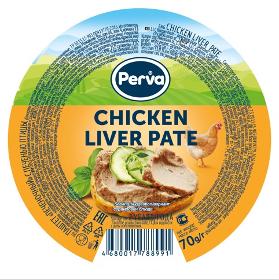
KURGAN MEAT PROCESSING PLANT STANDART (SATURN LLC)
Russia
Contents: water, chicken liver, beef fat, wheat flour, soy protein, table salt, emulgator e472c, onion, dextrose, dry lemon pulp, tumeric, ginger, white pepper, coriander, cardamom, mustard powder, vanillin extract, sugar, flavor intensifier E621, coloring agent – red rice. Nutrition value per 100 g of product (average value): protein – 5,0 g; fat – 25,0 g; carbs – 4,0 g. Food energy value / Caloric value per 100 g of product (average value): 1092,8 kJ/ 261,0 kkal. Weight percentage of meat ingredients is no less than 51,0 % (on filling). Storage life: 2 years from the production date. Production date can be found on bottom. Store at a temperature between 00 to + 200С and relative humidity of up to 75%. After opening the consumer can, the preserves must be kept in the fridge for not more than 24 hours at a temperature between + 20С to + 60С. Cooling is recommended before consuming.
Request for a quoteResults for
Table salt - Import exportNumber of results
37 ProductsCountries
Company type
Category
- Organic food (15)
- Foods, precooked and gourmet (5)
- Miscellaneous products of animal origin (4)
- Tinned Foods (4)
- Dietary and organic foods (3)
- Salt (3)
- Salt, industrial (3)
- Common wheat (2)
- Pork meats, tinned (2)
- Additives, food (1)
- Bathroom accessories (1)
- Carboxylic and anhydric acids (1)
- Chemicals - import-export (1)
- Detergents, household (1)
- Meat, tinned (1)